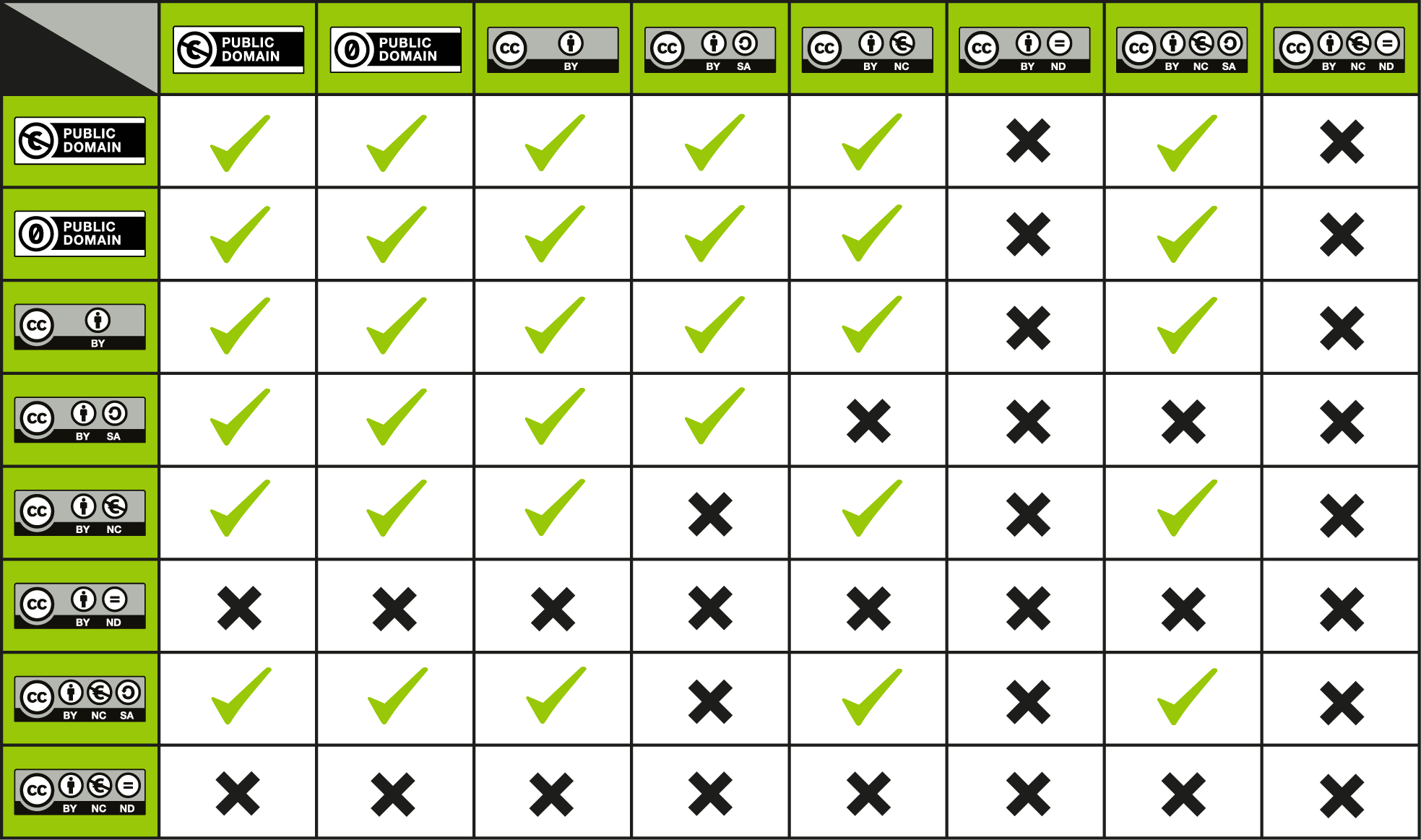What does it mean?
In 2002 the Creative Commons released its first license free to the public. By 2005 an estimated 20 million works had been licensed with a CC license. We can think of CC licenses, at their essence, as telling the world that we want to share what we created but reserve SOME rights. As opposed to traditional copyright where we reserve ALL rights and Public Domain where we reserve NO rights, the CC license allows us to control what people do with our content. In the following video, a brief overview of Creative Commons Licensing is presented.
https://vimeo.com/25684782
Do we have to be experts in copyright law to take advantage of what this offers? Fortunately the answer is NO. The CC license is presented in 3 tiers or layers, each layer designed to be used by a different audience. The three layers of a CC license are:
- Legal Code
- Human Readable
- Machine Readable
Try It
Go to the Creative Commons Website and see what the “three layers” look like for the most commonly and open of the licenses: CC-BY.
The Share-Alike clause in some of the Creative Commons licenses makes it so that creative works licensed with some CC licenses cannot be remixed with creative works licensed with some other CC licenses. Read these questions and answers from the CC FAQ and then check your understanding by playing the OER Remix Game.
Can I combine works that use different Creative Commons licenses into my work?
It depends. You may only remix works released under different CC licenses if the terms of the licenses involved permit it. The NoDerivatives licenses do not permit remixing at all. All the other CC licenses allow remixes, but may impose conditions on how the remix may be used. For example, if you create a remix with a work licensed under a ShareAlike license, you need to make sure that the remix is licensed under the same license conditions. Likewise, if you want to use the remixed work for commercial purposes, you cannot incorporate a work released under one of the NonCommercial licenses. Review the charts below for more details on whether and how differently licensed works can be combined and licensed.
If I derive or adapt a work offered under a Creative Commons license, which CC license(s) can I apply to the resulting work?
The chart below details the CC license(s) you may apply to the resulting work. Please note that this chart is not a substitute for legal advice and should not be relied upon as legal advice.

The green boxes indicate where compatibility exists between licenses. When modifying a work licensed under the license identified in the lefthand column, you may license the adaptation under one of the licenses indicated on the top row if the corresponding box is green. Black X’s indicate those licenses that you should not use for the adapted work. In the absence of an applicable copyright exception or limitation, you cannot adapt works that contain the No Derivatives license element.
Abbreviation Key
- by = Attribution only
- by-nd = Attribution-NoDerivatives
- by-nc-nd = Attribution-NonCommercial- NoDerivatives
- by-nc = Attribution-NonCommercial
- by-nc-sa = Attribution-NonCommercial- ShareAlike
- by-sa = Attribution-ShareAlike
- pd = Dedicated to or certified to be in the public domain via one of our public domain tools or other public domain work
Candela Citations
- Compatibility of Creative Commons Licenses. Authored by: David Wiley. Provided by: Creative Commons. Located at: http://davidwiley.org/. License: CC BY: Attribution
- Course Content. Authored by: Linda Williams. Provided by: Tidewater Community College. License: CC BY: Attribution
- Creative Commons Kiwi. Authored by: CreativeCommons AotearoaNZ. Located at: https://vimeo.com/25684782. License: CC BY: Attribution

